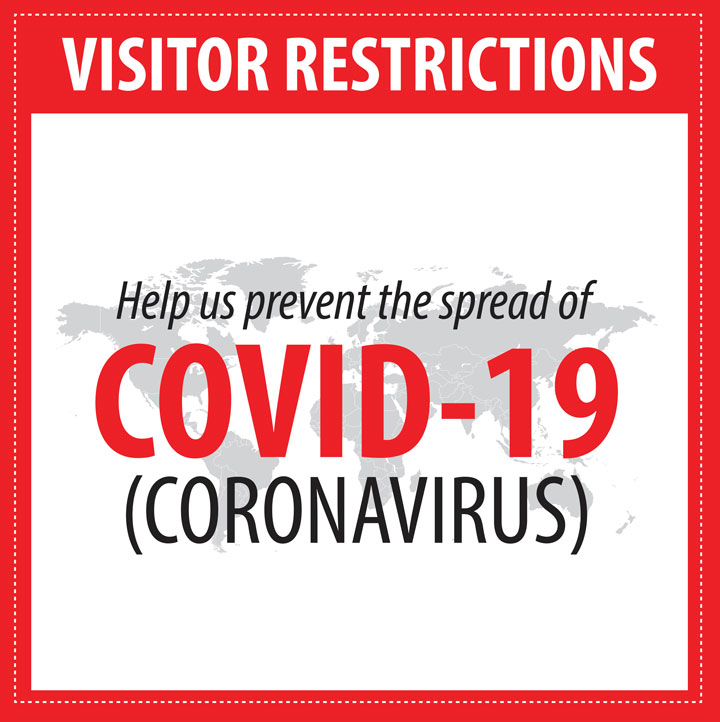In the wake of the COVID-19 pandemic, hospitals across the nation established strict visitor restrictions for all inpatient units, which particularly impacted the pediatric inpatient units. Some hospitals limited the total number of visitors during a child’s hospital stay to only two parents/guardians, with only one parent allowed to visit at a time. In addition, parents/guardians could only make one switch-out per day which had to be completed outside of the hospital.
As a nursing student and advanced practice nurses we recognized the impact visitor restrictions had on nursing practice as well as patient safety. An ethical debate arose on the hospital pediatric oncology unit where one of us worked in the fall of 2020, due to only one parent being permitted at the bedside during their child’s battle against cancer. As a result, on October 1st, 2020, our hospital’s policy changed to allow both parents in the room, but still restricted other family members from visiting, with few exceptions made during end-of-life care.
Was it ethical to allow only one parent in the child’s room at a time during their fight against a cancer? We argue that these restrictions and policies ultimately were unethical and provided an opportunity for additional psychological and physical suffering of the child, family and even the nurse.
When considering the ethical principles of nonmaleficence (do no harm) and deontology (duty and obligations), the right to have both parents at the bedside must be upheld.The obligation to do no harm includes the support of the rule to not cause pain either physical or emotional. In the absence of parental presence, the child can experience additional psychological and physical suffering.
As a case study, a two year old patient’s chemotherapy drug had to be administered over a 10 hour time period. When the hospital restricted visitation it meant the two-year-old was left alone during a round of chemotherapy while her parents switched-out off the hospital grounds. During that period, she had a high risk of experiencing an adverse reaction to the chemotherapy drug.
We recognize that parents act as a second set of eyes for us while caring for our patients. Parents know their children best and often recognize when something is not right with their child and alert the nurse. This lack of parental presence during critical times, due to visitor restrictions, provides opportunity for negative outcomes. Nurses who have multiple patient assignments do their best to be in patient rooms as often as possible but ultimately cannot be in one room for the entire shift when they have multiple patients to care for.
Deontology supports the idea of duty to the overall well-being of our patients and emphasizes our duty as nurses to do what is best for our patients first. In the wake of the COVID-19 pandemic, strict limitations on visitors for pediatric patients, specifically those on pediatric oncology units, is unethical given that it can produce negative outcomes physically for patients and families on the unit as well as create additional emotional suffering. To be sure, there are reasons that hospitals restrict visitors during the COVID-19 pandemic – certainly the protection of patients and hospital staff is paramount. However restricted visitor policies create an unsafe environment which is not what is best for our pediatric patients. In addition, according to Provision 2 of the ANA Code of Ethics the nurse’s primary commitment is to the patient, whether an individual or family, which was forced to be broken with this policy.
The COVID-19 pandemic has led to the development of policies which are overarchingly created for utilitarian reasons with the idea that risking one patient’s well-being is worth the sacrifice to maximize the health of the hospital community as a whole. This mindset has allowed us to minimize the impact it has on individualized care. Opponents could argue the risk of a COVID outbreak outweighs the risk of an adverse event occurring to one patient. Rule consequentialism viewpoints support this opposing idea because it leads to the greatest good for the most people.
Our argument against these restrictions still stands because parental presence contributes to the well-being of hospitalized children. According to the CDC there are effective safeguards to be put in place to decrease the risk of transmission such as screening of the visitors every 24 hours during visitations, visitor use of face coverings at all times in the hospital, and limitation of visitor movement around the hospital.
During times of illness, we know children need their parents, but we don’t know the outcome resulting from restricting parental presence. Nurses, according to Provision 3 of the ANA Code of Ethics, must promote, advocate for and protect the rights, health and safety of the patient and therefore should advocate against these restrictions due to the potential harm they could present. As nurses we do not only treat the patients, but we also treat their families.
References
American Nurses Association. (2015). Code of ethics for nurses with interpretive statements. American Nurses Association.
Centers for Disease Control and Prevention (CDC). (2020, September 15). Management of Visitors to Healthcare Facilities in the Context of COVID-19: Non-US Healthcare Settings. Corona Virus Disease 2019. https://www.cdc.gov/coronavirus/2019-ncov/hcp/non-us-settings/hcf-visitors.html.
Jahn W. T. (2011). The 4 basic ethical principles that apply to forensic activities are respect for autonomy, beneficence, nonmaleficence, and justice. Journal of chiropractic medicine, 10(3), 225–226. https://doi.org/10.1016/j.jcm.2011.08.004
Morrison, E. E., & Furlong, E. (2019). Health care ethics: critical issues for the 21st century (3rded.). Jones & Bartlett Learning.
Virani, A. K., Puls, H. T., Mitsos, R., Longstaff, H., Goldman, R. D., & Lantos, J. D. (2020). Benefits and Risks of Visitor Restrictions for Hospitalized Children During the COVID Pandemic. Pediatrics, 146(2). https://doi.org/10.1542/peds.2020-000786
























